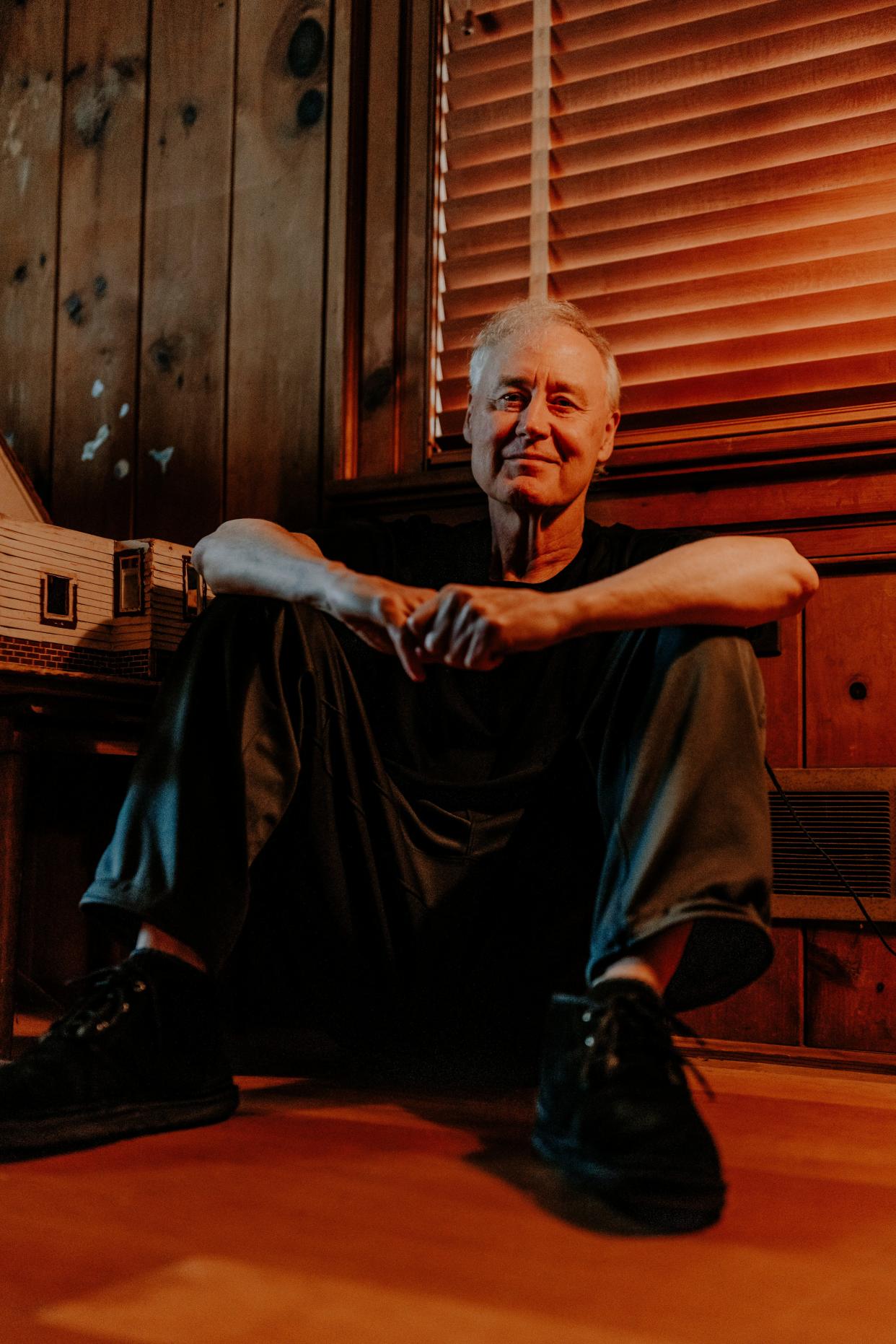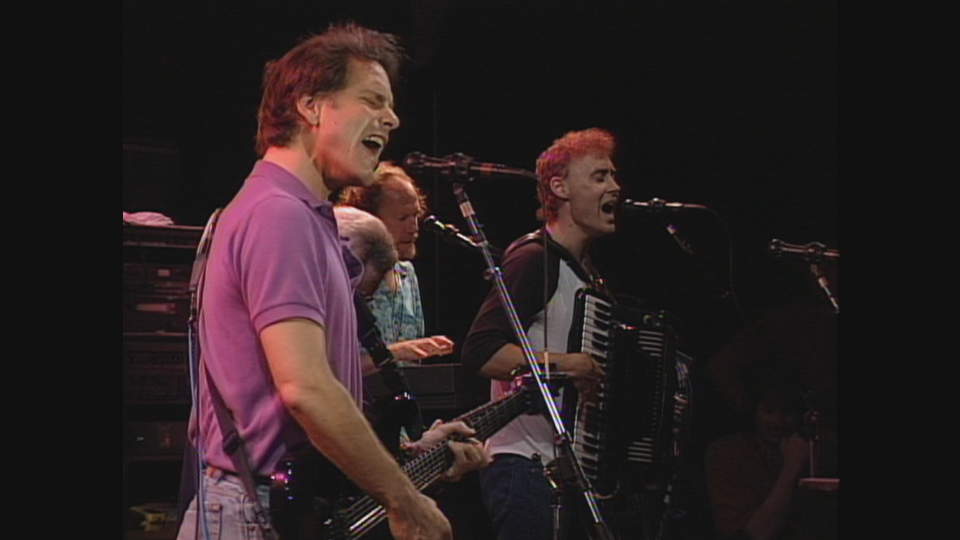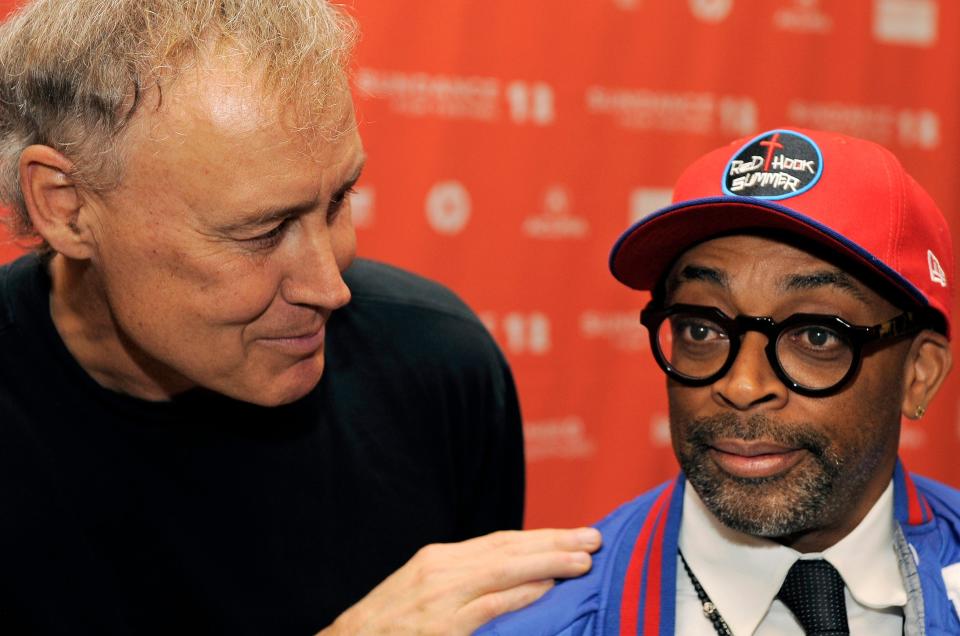Interview: Bruce Hornsby on 'Spirit Trail,' memories of playing with the Grateful Dead

Bruce Hornsby: 7:30 p.m. Thursday, Nov. 9; Van Wezel Performing Arts Hall, 777 N. Tamiami Trail, Sarasota; $52-$82 (each ticket includes a copy of the "Spirit Trail 25th Anniversary Edition" three-CD box set to be picked up at the show); 941-263-6799; vanwezel.org. Also playing Nov. 11; Lyric Theatre, Stuart; Nov. 12; The Parker Playhouse, Fort Lauderdale; Nov. 15; Steinmetz Hall at Dr. Phillips Center for the Performing Arts, Orlando; Nov. 16; Seminole Casino Hotel, Immokalee; Nov. 18, Capitol Theatre, Clearwater; Nov. 19; Ponte Vedra Concert Hall, Ponte Vedra Beach.
Update: According to a press release sent Wednesday from Van Wezel, Bruce Hornsby's Nov. 9 concert has been postponed to Dec. 8.
From writing a No. 1 hit that later became the backbone of multiple rap songs, playing Grateful Dead covers in his brother's college band to playing with the Dead himself, and starting a creative collaboration in the '90s that led to his latest albums featuring a new generation of indie musicians, Bruce Hornsby has led a musical career full of second lives.
The Grammy-winning pianist and singer-songwriter will revisit another period in his musical career when he plays multiple Florida venues on tour, starting Thursday, Nov. 9 with Sarasota's Van Wezel Performing Arts Hall. The tour celebrates 25 years since the release of Hornsby's 1998 album "Spirit Trail," an occasion he also marked this year by putting out a 25th anniversary edition of the album with previously unreleased material.
Hornsby first became famous to many after forming Bruce Hornsby and the Range, whose 1986 debut album "The Way It Is" scored a No. 1 hit with its title track — later famously sampled on rapper 2Pac's song "Changes" — and helped the group win a Best New Artist Grammy. He's continued to lead an eclectic music career that's included winning two more Grammys for Best Pop Instrumental Performance and Bluegrass Recording, becoming a "floating member" of the Grateful Dead, and contributing music to multiple Spike Lee films. Most recently, he's released three albums — 2019's "Absolute Zero," 2020's "Non-Secure Connection" and last year's "'Flicted" — that feature musicians such as Justin Vernon of Bon Iver, Ezra Koenig of Vampire Weekend and Danielle Haim of Haim.
In an Oct. 27 phone interview with the Herald-Tribune, Hornsby discussed "Spirit Trail," his favorite memories playing with the Grateful Dead and more. Here are excerpts, edited for brevity and clarity.
Interview: William Shatner, 92, says space flight made him realize humans on verge of 'going extinct'
100+ more fun things to do in November near Sarasota, Bradenton, Venice and Punta Gorda
Ticket Newsletter: Sign up to receive restaurant news and reviews plus info on things to do every Friday
This tour you're on supports the 25th anniversary of “Spirit Trail.” What was it like revisiting the album when assembling the 25th anniversary edition, including the previously unreleased material?
I thought about doing this for a while now, because it’s one of the records I’m most proud of having made, and wasn’t a big hit record because it didn’t have a Top 40 song on it. It just felt like a work of some depth and good writing and interesting playing within the songwriting — so many reasons to shine a light on it belatedly, 25 years later. So originally, we were just going to remaster the record and also put out a live version, this extra CD or record called “Live Trail,” that showcases the evolution of the songs; in some cases, major evolution. A perfect example is, if you listen to the record, “Funhouse” and then the live version of “Funhouse” — they’re just remarkably different, and one’s way more evolved and boisterous and exciting.
So we were just going to do that, and then all of a sudden, one day working in the studio, I saw this CD at the top of this big stack of CDs on this furniture piece. It was called “LP #8 Roughs 6/1/2000” and I thought to myself, “Well, let me listen to this, I’d like to hear what this was.” “Spirit Trail” was album #6, we made a live record “Here Come the Noise Makers” that was #7, and these were songs that were written ostensibly for this #8, the studio follow-up to “Spirit Trail,” but they didn’t make the record. I took a left turn, prodded by my RCA A&R exec, and made this sort of very modern electronica blues record, I would call it, called “Big Swing Face.” So these songs were left by the side of the road, but I heard them and I thought, “Wow, these are worth hearing.” Then I remembered a fourth song that was not on this CD, and we found that — we actually found the multitrack for that song, which is called “Evening Sun” — and we put together this four-song EP that I called “Lost and Found on the Spirit Trail.”
One of the songs on “Spirit Trail” is “Sunflower Cat (Some Dour Cat) (Down with That),” which samples the Grateful Dead’s “China Cat Sunflower.” Obviously, you have a lot of history with the Dead, but what was the idea behind that particular choice?
I was working with a producer on that record, especially the second CD of “Spirit Trail,” a guy named Mike Mangini. Mike and I were in the studio working and he said to me, “OK, what’s up with this Grateful Dead thing? I don’t get it, I don’t understand it; can you enlighten me about it?” I said, “OK, well, let me play you some things,” and I played him maybe four or five things. Maybe the fourth or fifth thing that I played him was “China Cat Sunflower” into “I Know You Rider,” but he didn’t get past “China Cat Sunflower.” He heard this groove and this lick, the opening guitar lick, and he said, “Whoa, I love that.” Mike Mangini’s kind of a hip-hop producer, and he just thought it was a funky groove. One of us said, “Hey, why don’t we try to write a new song over this lick?” So we sampled that guitar lick and put a beat to it and I wrote that song over it. So that’s how it came about, very specifically.
Just to complete the story about the “Sunflower Cat” situation, one thing I said at the time was, “Hey, I had (Jerry) Garcia play on my last three previous albums before this” — in 1990, “Night on the Town”; 1993, “Harbor Lights”; 1995, “Hot House.” So I said, “Well, what the hell, let’s just sample his ass and he’ll be on four in a row.” So that was another reason to do that.

As I said, you have a lot of history with the Dead, from playing covers in your brother’s college band to playing with the Dead themselves. Do any moments or shows stand out in particular?
There were so many. The last highlight would have been in the last year of (Garcia’s) life, when he was really struggling, frankly. They thought that my presence might pick him up and give him a boost. They asked me if I would come down to Charlotte and sit in and play; they rented a local piano, and so I did that, they flew me down to Charlotte and I played one of the nights, and it was a pretty great night. That was in March, spring tour, and in June for summer tour, they asked me to drive up and play both nights at RFK (Stadium) with them. I did that, and the nights were special again, but he was really struggling then. I felt I was able to pick him up a little bit, another spark to come into the music and help him a bit.
Then, really, the first times I played: My first time as a sort of semi-member — Garcia called it a “floating member” because I would come in and out as my schedule permitted — was winging it with no rehearsal at Madison Square Garden for five nights. It was a six-night run in September 1990, and first night I had to miss because I was playing a place called Lake Compounce in Connecticut. Then when I walked offstage, there was a big car there in the backstage area to pick me up and drive me to the Ritz-Carlton to start the next night, playing the last five nights for them, again, with no rehearsals. So that was really something else.
Then Europe ’90 after that was also very special, traveling through, riding around on a bus going from city to city. Garcia and I would always sit in adjacent seats and just talk about old-time folk music and traditional American music. He was a walking encyclopedia of that old-time traditional music and I was very interested in that; I had been for years, but didn’t have the knowledge that he had, so he was just imparting that to me on bus rides. I could just keep going on and on, but those are a few.
You graduated from the University of Miami. Could you tell me what that time of your life was like?
Well, I was deeply committed to the study of piano, at that point mostly in the jazz area. I was a heavy woodshedder, as they say, heavy practice guy — five hours a day in the Foster building, every day. Then doing gigs because I was putting myself through college, because my dad wasn’t so into this music thing. He said, “Well, if you want to do this, then let’s see if you really want to do it; you pay for it.” Because of that, I would play every bar mitzvah and every country club gig, dance gig and disco band gig in Hollywood, Florida. So I did a lot of music playing and got a lot together in the two years I was there. I had a tough teacher, Vince Maggio was my teacher, and he was a great teacher because he was not someone who could just talk the talk, he could walk the walk. So that was special, and again, I got a lot together.

Another of your notable creative collaborations has been with the director Spike Lee. How did that collaboration start, and what has it been like to maintain it over these decades?
A mutual friend, Branford Marsalis, introduced us. Spike wanted to meet me, so Branford hooked up a little dinner in New York City when I was there. I asked Spike to make a video for me, so we made a video for our song “Talk of the Town” from our “Harbor Lights” record, and it just went from there. He asked me to contribute an end title song for his movie “Clockers” in 1995, and I’d just written a song with Chaka Khan. We gave him that song, he used it right away, made a video up in Harlem with Chaka and I. It just kept on. Every few years, he would call me to ask me for, for instance, another end title song for the movie “Bamboozled,” I wrote a song called “Shadowland” for that in 2000. Then in 2008, he asked me to score something for him, an ESPN documentary on Kobe Bryant called “Kobe Doin’ Work.” I felt like that was a bit of an audition for me, and I passed the audition I guess because for the next 11, 12 years, from 2008 to 2020, I’ve scored six films for him and contributed more music to other films too.
Then I started writing songs over film cues; I’ve written over 240 different pieces of music for him for all these projects over that 11, 12-year period, then I started writing songs on those cues. And that started me on the road to my last three records — “Absolute Zero,” “Non-Secure Connection” and “’Flicted” — all maybe 60% of each record coming from Spike Lee film music that I’d written. So that really catapulted me into a different area where the music is very cinematic and I ended up working with all these great modern young indie musicians who were reaching out to me: Justin Vernon of Bon Iver, James Mercer of The Shins, Ezra Koenig of Vampire Weekend, Danielle Haim from Haim. My musical life has just flowered in the last five years combining the Spike Lee music with all these amazing young musicians.
Yes, I wanted to talk about those three most recent records and the variety of guest musicians from another generation — also Blake Mills and Jamila Woods. So I was going to ask how you chose the musicians you wanted to work with, but it sounds it might be the other way around?
Mostly in this case, it was me reaching out to them. The notable exception is the one that started it all, Justin Vernon of Bon Iver. We ended up writing a song together for the last Bon Iver record — I’m so proud to have a song on a Bon Iver record. I guess I would say it like this: Justin Vernon opened this door for me and I went through this door, only to find there were a whole lot more people in this room who felt about me the way he did. So then when I realized there was this larger world of love for me, then I would become friends with these people and then say, “Hey, I got this song and I hear you singing on it, would you like to hear it?” and they would hear it and go, “Yes, I’m in.” So that’s how it worked, after being led into this room by Justin.
Your music also got introduced to another generation through hip-hop and the sampling of “The Way It Is,” most famously on 2Pac’s “Changes,” but also as recently as Polo G’s “Wishing for a Hero” three years ago. How has it felt to see that kind of second life for that song?
I’ll give you a very specific anecdote here that illustrates it a bit. I have twin boys, they’re now almost 32, and one of them was a hotshot basketball kid. He’s now playing pro basketball in Europe for the last several years, and he played at LSU. And as a kid age 10, 11, 12, he played at the high level AAU program in our area called the Boo Williams program. He was the only white kid on the team for years, but all of his friends knew of me because of 2Pac’s “Changes.” They said, “Oh wow, Keith, your dad wrote ‘Changes,’” or they would find out about it and look at me differently after having found out about my involvement. So that was pretty great. All of a sudden, I had credibility in the Hampton-Newport News hood. There are lots of stories like that, but that’s probably the most fun.
Email entertainment reporter Jimmy Geurts at [email protected]. Support local journalism by subscribing.
This article originally appeared on Sarasota Herald-Tribune: Interview: Bruce Hornsby on Grateful Dead, more before Florida shows